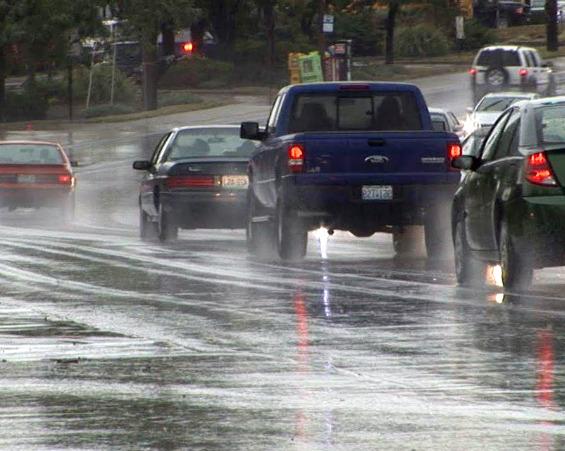
The word "aquaplanning" was probably heard by every motorist. But what it is, how to avoid it, and what to do if it does come, knows far not everyone.
So, aqua planning is the total or partial loss of tyre adhesion due to a water wedge between the tyre and the road surface. In other words, the wheel cannot "push" the water layer and literally "floates". Aquaplanning can occur on any wet road-during or after rain. The main risk of water planning is that the car becomes virtually unmanageable.
The main factors affecting the possibility of aquaplanning are the mass of the car, the thickness of the water layer on the road and the speed of the car. If you cannot influence the first two factors, the third factor is entirely dependent on you. One of the main rules of safe driving in the rain and immediately after the rain is to observe speed and not exceed speed. Theoretical studies show that aqua planning appears from 70 to 100 km/h, but in practice this effect can occur before. That's why it's worth paying attention to the wet road!
How to avoid water planning?
When approaching the pool, the speed is to be slowed down, both hands behind the wheel and the front wheels sharp. If you're in a puddle with front wheels, the car can just roll. If the puddle is at a bend, you can adjust its trajectory during the passage, and the main thing is not to make any sudden movements.
What do you do if the aquascheduling effect is still up?
The first and most important rule is not to make sudden movements. No sharp blows to the brakes or corners of the wheel-the car and this is almost ungoverned, and your sudden actions will only make the situation worse.

Remember that the behavior when overtaking in the snow is different from the aquaplanning behaviour: if the car sailed, the gas needs to be dropped, regardless of the type of drive.
When aquaculture is used, it is better to brake than the engine, not the service brake.
Christmas tyres-a panacea for aquaplanning?
In recent times, so-called rainwater buses have been gaining popularity, reducing the risk of aquaplanning and are ideal for driving on wet roads. All these tyres have a directional tread pattern, so that the water is better removed from the tyre contact stains on the road.
However, it is worth remembering that even the most expensive rain tires do not guarantee 100% protection against aqua planning. Studies have shown that the effect of aqua planning on rainwater tyres is still likely to be at a slightly higher speed than conventional tyres. In addition, the negative tread on the rainwater tyres will be higher-soundness, as well as earlier wear.









